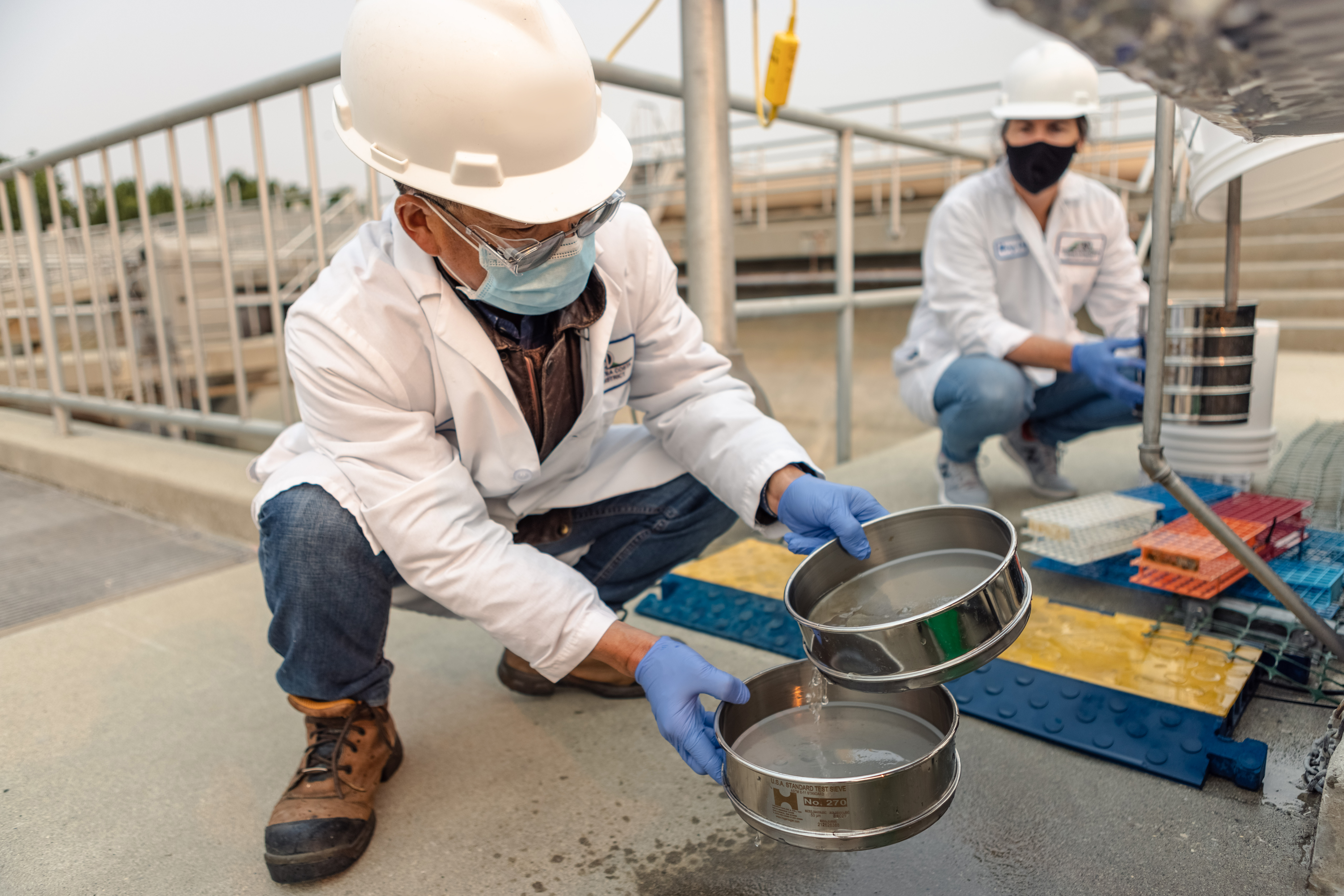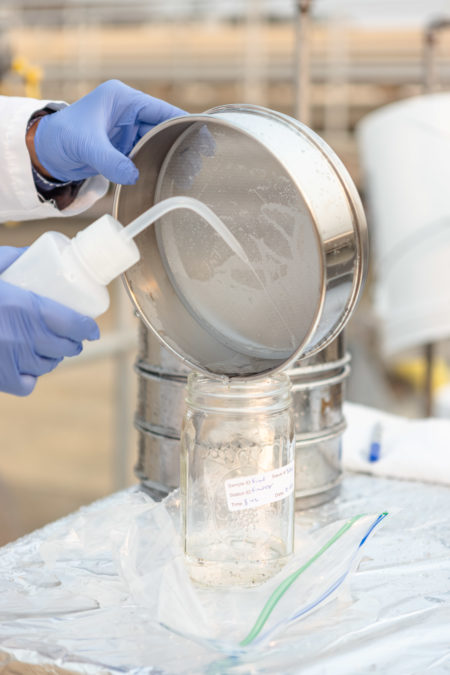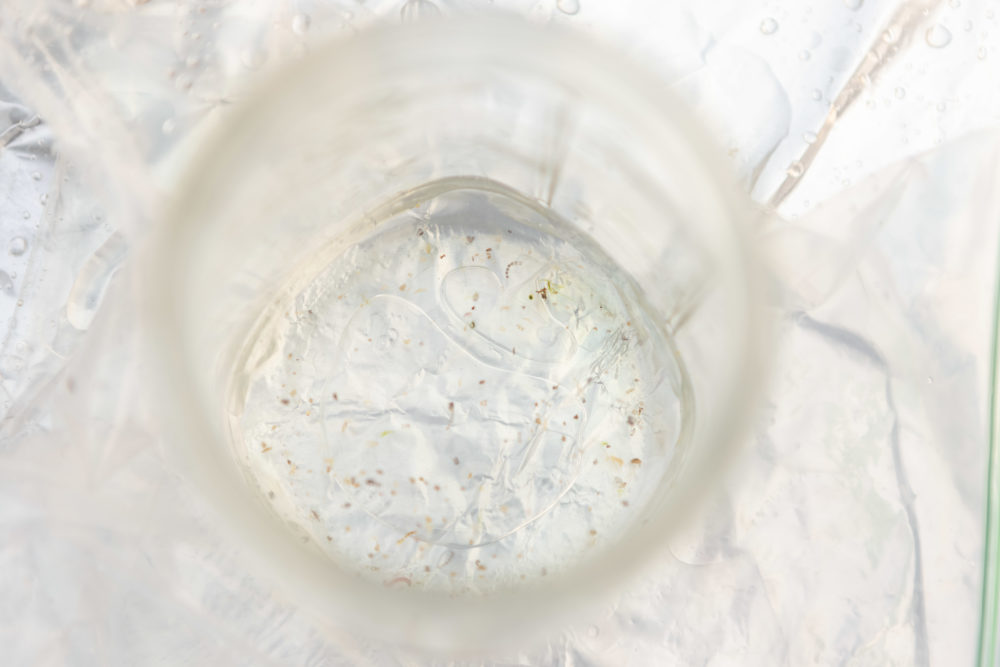
Central San lab technicians measuring microplastic. Photos courtesy of Central San.

Samples taken for a pilot study headed by Southern California Coastal Water Research Project on measuring microplastic.
Microplastics are some of the world’s most pervasive and troubling pollutants, finding their way into water, soil, air, wildlife, and humans. These tiny particles come from many sources, including larger plastic debris that breaks down into smaller pieces over time. When plastics are washed down the drain or flushed down the toilet in our service area, they travel to our treatment plant in Martinez. Although our treatment processes remove most plastic from wastewater, tiny microplastics can pass through our plant and end up in Suisun Bay.
Because microplastics come in numerous sizes, shapes, colors, and chemical compositions, even measuring how much is in our wastewater is no simple task. This past year, Central San participated in a pilot study headed by Southern California Coastal Water Research Project to help develop standardized sampling methods for microplastics. The research is part of a statewide effort to develop effective strategies for managing microplastics in California’s coastal waters.
For the study, our Laboratory team collected samples from different points in our treatment process over 24-hour periods. The team filtered the water through stacks of sieves with varying meshes designed to capture microparticles of different sizes. The samples were then sent to a specialized lab for analysis.
Central San was the first agency in California to test the sampling protocols and equipment in a real-world treatment plant. Through repeated testing, we were able to iron out some kinks in the process and modify the sampling apparatus to improve its reliability. We also produced a training video to document our process for other wastewater utilities to follow.
Finding reliable means of measuring microplastics in wastewater is an essential step to understanding how best to manage them. The next phase of the study will look at the effectiveness of different wastewater treatment methods in removing these troublesome pollutants.

A close-up of one of the sample jars shows some of the various microparticles collected.
While there’s still much we don’t know about microplastics, one thing we do know is that the best place to address the problem is at the source. Using fewer plastics, to begin with, is the single most effective step we can take to prevent plastic pollution.
Reducing, reusing, and recycling are the best ways to stem the tide of plastics into our waterways and oceans.